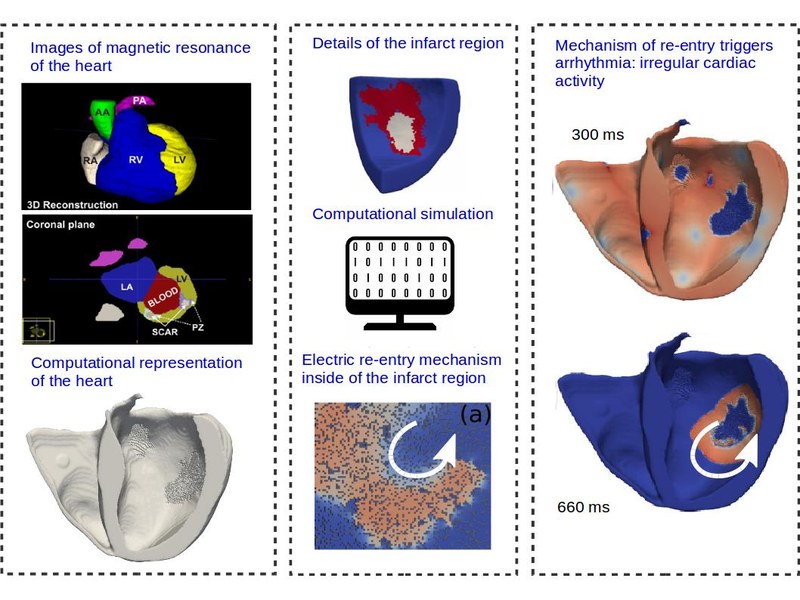A novel simulation procedure allows new insights on ectopic beats in the heart
Jan 09, 2019
Ramon y Cajal researcher in the Physics department Sergio Alonso publishes, in collaboration with Brazilian Universidade Federal de Juiz de Fora and the Deutsches Herzzentrum Berlin, a novel simulation method to understand how the hearts can beat anomalously with a signal originating from the same heart (ectopic beat) instead of our natural external pacemaker.
Ectopic beats are known to be involved in the initiation of a variety of cardiac arrhythmias. They have been found to originate from infarct areas, regions of micro-fibrosis and other heterogeneous tissues. Sergio Alonso publishes in collaboration with Brazilian and German researchers a new procedure to simulate the generation of ectopic beats near infarct regions via the micro-reentry mechanism in a patient-specific biventricular model. The patient-specific geometrical model of the heart is obtained through magnetic resonance imaging (MRI). Because microscopic information about the heterogeneous structure of the infarct regions is not available, Monte-Carlo simulations are used. The simulation results reveal that ectopic beats emerge from micro-reentries that are sustained by the heterogeneous structure of the infarct regions.
The micro-reentry mechanism may be related to the zig-zag course of activation that occurs due to the intricate morphology of a two-phase medium composed of conducting (myocytes) and non-conducting (necrosis or fibrosis) materials. This two-phase medium forms a maze in which waves fractionate and follow zig-zag pathways. Depending on the topology of this maze, intricate circuits can be formed that permit sustained activation ninside the infarct region, under conditions close to percolation.
Sergio Alonso belongs to the consolidated research group Computational Biology and Complex Systems. BIOCOMSC. For more information you can see his webpage and further details of the research in portuguese.
Ectopic beats arise from micro-reentries near infarct regions in simulations of a patient-specific heart model
Sachetto, R.; Alonso, S.; Otaviano, F.; Martins , B.; Filipe, J.; Kuehne, T.; Weber, R.
Scientific reports Vol. 8, p. 16392-1-16392-14
DOI: 10.1038/s41598-018-34304-y

Share: